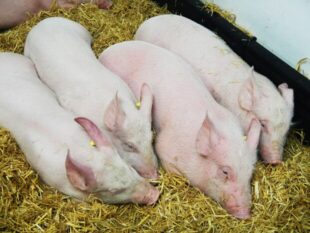Through the £15 million Nutrient Management competition, we’re offering funding to develop solutions which address the challenges related to nutrient management in soils and water associated with agricultural livestock and crop production. In this post, I'll share links to the guidance so you can prepare for the competition opening on 29 May.
We want to make it easier for farmers to strengthen their businesses. To that end, several changes to permitted development rights are coming into effect from 21 May.
Our project, the Waveney and Little Ouse Landscape Recovery Project, sits on the headwaters of the 2 rivers, covering over 1,600 hectares between the towns of Diss on the Waveney and Thetford on the Little Ouse. The project seeks an opportunity to realise the invaluable services our floodplains provide. In this post, I'll share an overview …
Our response to the Rock Review set out our commitments in light of its recommendations. It is now one year since we published our response. And, of the 75 commitments, we have completed or are working on 64. In this post, we’ll summarise the progress we have made over the last year. We also shine a light on …
From today, small groups of farmers in England can apply for a Local Resource Option (LRO) screening study. An LRO is a water resources scheme that improves the resilience or supply of water in a local area. LRO screening studies are one way farmers and growers can better understand their options to improve the supply or resilience …
We are pleased to tell you that legislation to protect hedgerows has today been laid in both Houses of Parliament. If approved by Parliament, the Management of Hedgerows (England) Regulations 2024 will put baseline hedgerow management practices into law, providing a consistent approach across all people operating on agricultural land.
Groups of farmers in England can now apply for a grant to improve freshwater habitats. Through the new Water Restoration Fund, local groups can apply for funding to bolster their capacity and capabilities for delivery of on-the-ground projects which improve the water environment. In this post, we'll explain how the fund works.
If you suffered damage to your land during Storm Henk that was uninsurable, the Rural Payments Agency (RPA) will contact you about financial support to help cover the costs of returning your land to the condition it was in before flooding occurred. In this post, we'll give an overview. Post updated 12 April.
Since we opened the Sustainable Farming Incentive (SFI) for applications, we’ve continued to refine the scheme. One of the things we’ve been monitoring is the impact of those actions which take land out of food production. In this post, we’ll explain why we’re putting area limits on some SFI actions.
With the deadline fast approaching, I want to encourage horticulture growers and farmers in England – and contractors to them – to consider applying for a grant offered through the Farming Equipment and Technology Fund 2024 (FETF).













 The
The 